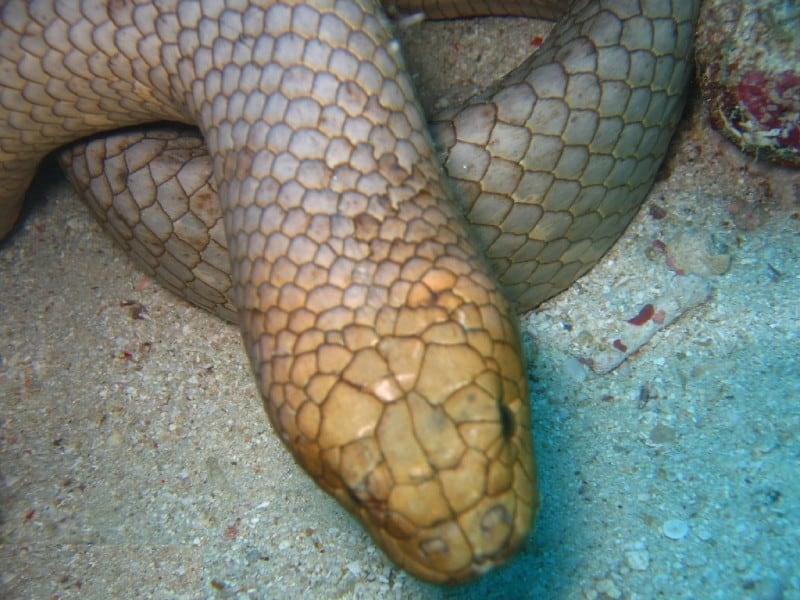
Olive Sea Snake Facts
- Given its color and shape, the Olive Sea Snake may remind you of an olive branch, but it’s not one you want to extend out to anyone. It also ranks as quite deadly.
- Quite understandably, its name comes from the rather unique color of its skin.
- The animal is a true snake. This means that, unlike other marine reptiles such as sea turtles, it spends its entire life in the ocean.
- Though not overtly aggressive, this species is extremely curious and approach divers. It will rarely bite, though, unless provoked.
- In such a case, as a defense, it would bite, and its venom can be fatal.
Related Articles
Olive Sea Snake Physical Description
The Olive Sea Snake attains an average length of just over 6 ft (2m). Its flattened tail also allows it to swim powerfully through the ocean.
Though it breathes air, it possesses an extremely large lung which allows it to remain submerged for several hours.
Like many sea snakes, it possesses a light sensing organs in its tail. It evolved as ovoviviparous, and reproduces through internal fertilization, giving birth to 6-8 live young.
The young are much darker in color at birth and slowly lighten to the olive color as they age.
- Kingdom: Animalia
- Phylum: Chordata
- Class: Reptilia
- Order: Squamata
- Family: Elapidae
- Genus: Alpysurus
- Species: A. laevis
Olive Sea Snake Habitat and Ecology
The Olive Sea Snake does not possess an extensive natural range and exists almost exclusively in the Indo-Pacific region. Individuals are most commonly seen along the northern coast of Australia and nearby islands.
The animal also primarily inhabits areas of coral reef, rocky shores, and lagoons.
Its principal prey consists of fish, eggs, crabs, prawns, cuttlefish, and a variety of small mollusks. The snake typically grabs its prey in its coils, then injects its powerful venom.
This species generally lives for approximately 15 years. Though not hunted, it is occasionally trapped in nets by trawlers.
Species Sharing Its Range
Check out our other articles on European Honey Buzzard, Ohlone Tiger Beetle, Macquarie Island, Smooth Purple Coneflower, Texas Blind Salamander, Snowshoe Hare, Giant Girdled Lizard
